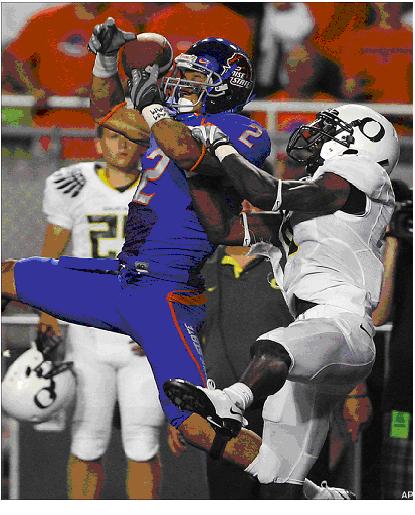
How can these athletes be the best in the world, and yet close their eyes at what would appear to be the most important moment? It is less surprising than it first seems.
Our brains are slow: it takes about a tenth of a second between the time that light lands on your eye to the time that the resultant perception occurs. That is a long time. A receiver running at 10 meters per second (or about 20 mph) moves one meter in a tenth of a second. If the receiver’s brain were to take the information at the eye and turn it directly into a perception of what the world was like, then by the time the perception occurs a tenth of a second later, that perception would be tenth-of-a-second-old news.
The receiver would be perceiving the world as it was a tenth of a second before. And because he may move a meter in that amount of time, anything that he perceives to be within one meter of passing him will have already passed him – or collided into him – by the time he perceives it. The ball may be moving faster still, maybe 30 meters per second (about 70 mph) or more, in which case it can move 3 meters in a tenth of a second.
Seeing the world a tenth of a second late is a big deal. That’s why our brains evolved strategies for overcoming this delay. Rather than attempting to build a perception of what the world was like when light hit the eye, the brain tries to figure out what the world will probably look like a tenth of a second after that time, and build a perception of that. By the time that perception (of the guessed-near-future) is generated in the brain, it is a perception of the present, because the near-future has then arrived. A lot of evidence exists suggesting that our brains have such “perceiving-the-present” mechanisms. And I have argued in my research that a great many of the famous illusions are due to these mechanisms – the brain anticipates a certain kind of dynamic change that never ends up happening (because it is just a drawing in a book, say), so one gets a misperception.
Back to catching with your eyes closed. Consider now that the perception you have at time t is actually a construction of your brain: the brain constructs that perception on the basis of evidence the eye got a tenth of a second earlier. So, to accurately perceive the world at time t, one need not actually have any light coming into the eye at time t. …so long as one had light coming in a tenth of a second earlier. Perhaps Pettis can get away with his eyes closed at the catch because his brain has already rendered the appropriate perception by that time.
Of course, when his eyes are closed at time t (the time of the catch), it means he won’t have a perception of the world a tenth of a second after the catch; but by then he’s being tackled and would only see stars anyway.






Comments